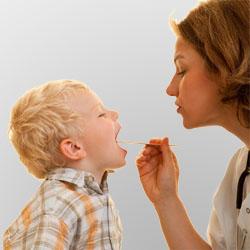Development of saliva-based exposure assays for detecting exposure to waterborne pathogens
 Microbes (like viruses, bacteria, and parasites) in drinking and recreational water can cause illness in humans. Identifying which specific pathogens we are exposed to can be very challenging because many types of pathogens can be found in water and many pathogens have similar symptoms. In order to understand the risks associated with waterborne pathogens an assessment is needed to determine if there has been human exposure to specific pathogens. Traditionally, methods to measure exposure have relied on serological assessments. These are expensive and invasive approaches requiring that blood samples be collected and tested for antibodies against the pathogens in question. There is a need for analytical methods that are less invasive, cost effective, rapid, allow for high throughput analysis, and can simultaneously measure exposure to multiple pathogens.
Microbes (like viruses, bacteria, and parasites) in drinking and recreational water can cause illness in humans. Identifying which specific pathogens we are exposed to can be very challenging because many types of pathogens can be found in water and many pathogens have similar symptoms. In order to understand the risks associated with waterborne pathogens an assessment is needed to determine if there has been human exposure to specific pathogens. Traditionally, methods to measure exposure have relied on serological assessments. These are expensive and invasive approaches requiring that blood samples be collected and tested for antibodies against the pathogens in question. There is a need for analytical methods that are less invasive, cost effective, rapid, allow for high throughput analysis, and can simultaneously measure exposure to multiple pathogens.
This new saliva-based method gives scientists the ability to accurately measure a person’s actual exposure to waterborne pathogens and to understand the relationship between the pathogen concentrations measured in water samples, illness rates, and human exposures. Further, this method enhances epidemiological studies by providing measurements of exposure, and can show decision makers which waterborne pathogens present the greatest risk and how different water management strategies affect the health of communities.
